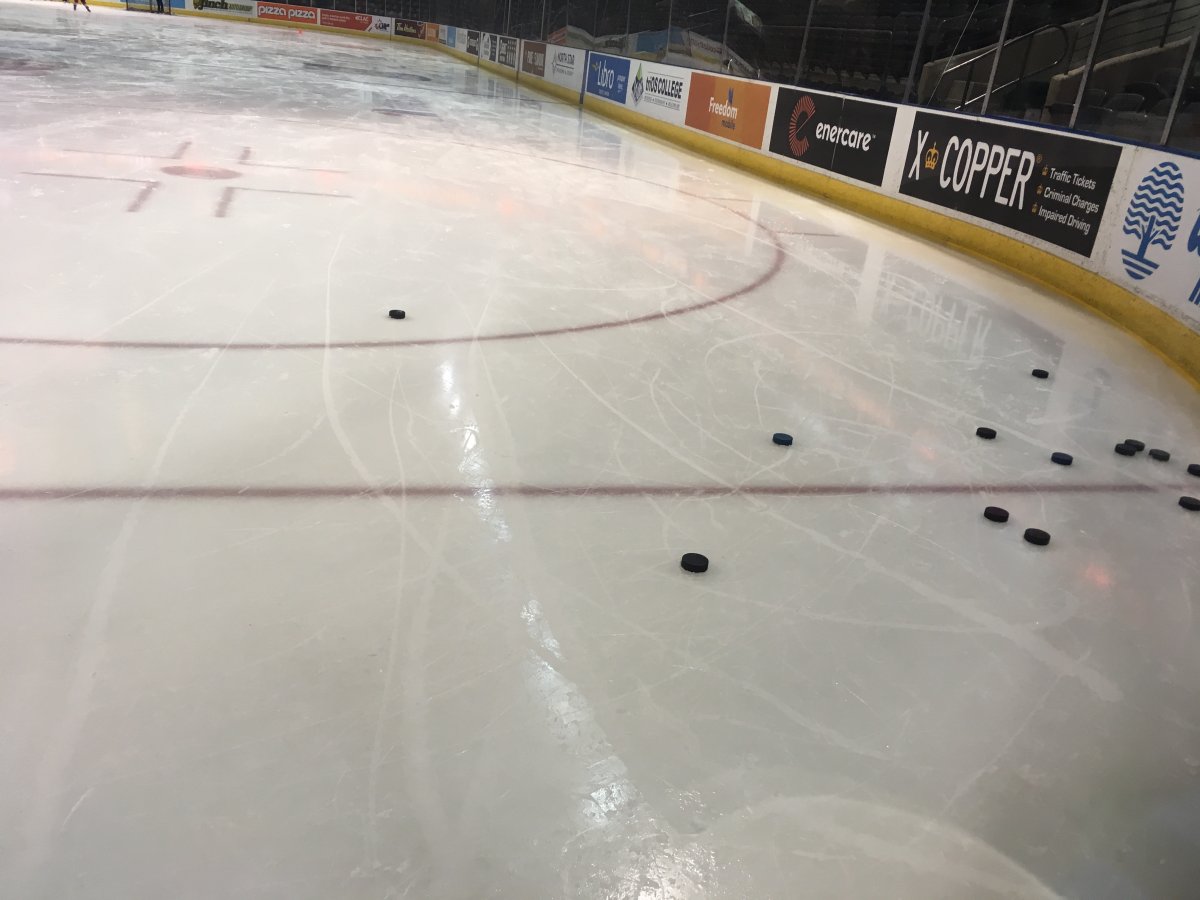You can’t take the world of sports and place it inside the borders of what we would call everyday life.

It would take you only seconds to realize you were trying to fit a square peg into a round hole.
If you were to grab a wooden stick, or one made of carbon fibre, titanium and Kevlar, and you were to hit someone with that stick as you walked down the street, you would have some problems.
And they would not be solved with, “You go to the box, two minutes by yourself, and you feel shame, and then you get free.”
A class-action lawsuit in search of compensation for Ontario Hockey League players seeking $180-million dollars in the form of back-wages, overtime and vacation pay has been given a green light by Ontario Superior Court Justice Paul Perell, and that has created greater discussion in the hockey world than the issue has already been responsible for.
Remove the legal speak and this is a suit that is set to examine how compensation should work for major junior hockey players, who are also known as amateur student-athletes.
The fact that it is proceeding should not be a major concern to anyone.
It brings certain questions into a broad forum.
Namely, why shouldn’t players be compensated for playing in the OHL?
Factor in tickets and merchandise, and you realize there is money being paid to watch and enjoy the product that the Ontario Hockey League provides.
Financial statements were gathered because of this suit and have made the rounds, and any inquiring minds who might have wanted to know, have had a look by now.
Those statements made it clear that money and profit do exist. In most cases, not to a huge extent, but it’s there.
If OHL teams are to be seen as employers of people between the ages of 16 and 20 years old, there is nothing stopping equating this to any other part-time job that a teenager might have. Instead of Windsor vs. Sarnia, we have McDonald’s vs. Burger King.
No one is asking for a million-dollar salary. If anything, the remuneration recommendations would seem content to sit at minimum wage.
So, what is the big deal?
Well, that’s where we go back to the square peg and the round hole of the sports world, and the world that we live in.
In order to really understand what we are dealing with, we have to tint any views away from what Adam Smith and capitalism have taught.
We need a vision that is more Thoreau, with a bit of Mark Boyle.
Not the civil disobedience that both men wind up tied to, but the role they gave and give to essentials.
So many numbers are being tossed around as this class-action moves forward that it is easy to get lost. The most important ones come from the Ontario Hockey League’s Standard Player Agreement.
OHL players do receive compensation. Overage players (of which there are a limit of three per team) receive $900 dollars per month. All other players receive $470 dollars per month. Those numbers are in every contract and are non-negotiable.
Add them up and you can make the argument that they total less than minimum wage.
Adam Smith would likely not approve.
And here’s where things get tricky. Tricky in the same way that you would try to decide the exact cost of raising a child, or how much money it takes every year to buy everything contained in “The Twelve Days of Christmas.”
If the lawsuit that was apparently initiated by former OHL players Daniel Pachis and Sam Berg were to go through and produce a settlement, it would almost certainly have a wide-ranging effect.
Pachis and Berg would get what they were looking for: Back pay, overtime and vacation pay. So would other players who decided to join. Lawyers involved would stand to be compensated.
And the Ontario Hockey League and its players, management, coaches and owners would forever be changed.
A court would have ruled that players deserve to be paid as employees. Depending on the legal jargon contained in the decision, it could change them from players TO employees.
That’s where we have to go back to Thoreau and Mark Boyle.
Very little in the life of an Ontario Hockey League player revolves around money. They are as cashless a society as we have.
In December, Business Today called Singapore, number 1 in a ranking of cashless countries.
If the OHL had national status, it would sail past Singapore at the blue line, deke their goalie and throw the puck upstairs for the game winner.
No contest.
Players begin with room and board. Teams provide a form of compensation to billet families, and billet families open their homes to the players as part of their own familial experience.
OHL players do not pay out of pocket for any part of this.
Top-end equipment is provided free of charge. If a skate breaks, a new skate is purchased by the team. If a skate-lace breaks, a new lace is provided.
You get the picture.
Sticks have gone from pennies a glass back in the days of old Titans and Sher-Woods to composites worth hundreds of dollars apiece. Let’s imagine for a moment that a player went through four sticks in a month. It’s not out of the question.
That would come with a price-tag of more than $1,000.
Players are never asked to provide money for their sticks.
All of that winds up being the equivalent to food, shelter and keeping the lights on, however, non-monetary compensation goes beyond that.
Scholarship packages are made available. As a rule of thumb, one year in the OHL is worth a year of tuition and books at a post-secondary institution. As with everything, there has been an evolution since the introduction of school packages. It is not uncommon now for a Standard Player Agreement to include a full four years of tuition and books after a player plays just one game in the OHL.
Pachis spent three seasons playing in the OHL in Saginaw and Oshawa and then went to the University of Ontario Institute of Technology for one year, and then Laurentian University in Sudbury for three more. He played university hockey in each of those four years.
Berg did not play university hockey. Since he only played eight games in the OHL, his scholarship situation may very well have been different.
Money for post-secondary education is not simply turned over to players on a month-to-month basis. It is held by the teams and then made available to a player following the completion of his OHL career and subsequent enrolment in a post-secondary institution.
A player may begin to take courses at one of those institutions at the age of 18, 19 or 20, should his situation allow, either by way of having a college or university in the city in which he is playing, or by making use of correspondence courses in cities that do not have post-secondary institutions. Provided the player has accrued enough time in the OHL, those courses would wind up being paid for by OHL teams.
If you tried to look after all of that on minimum wage, it wouldn’t be long before you were completely out of cash.
But, if teams are forced to treat players as employees, why would they not draw some lines?
If you work part-time or even full-time in a restaurant, there is a good chance you will be asked to pay for your own standard uniform.
Others require a deposit that will be refunded once a clean and washed uniform is returned upon the employee’s departure.
Would an OHL team follow a similar procedure?
That remains to be seen.
How many hours would players be allowed to work?
Today’s dressing room has become a hangout for players, long after practice is over. Players usually come in on off-days.
If you are picturing wooden benches with shower stalls in the back and a wipe-off board on a wall, you are missing a few of the creature comforts. Video room. Weight room. Kitchen. Ping pong. Video games. If your typical OHL dressing room was an apartment in a major city, you would need a very good job to afford it.
Minimum wage would not come close.
The atmosphere often assists in team bonding.
Some teams might choose to keep things exactly the same. They could supply sticks and equipment, maybe even scholarship money. Others would no longer have the resources. That would create a large gap between rich and poor.
Lastly, we have to consider the age of the players we are dealing with. Some teenagers are very good with money. Others spend it just as quickly as it comes in. Major junior hockey players are no different.
Instead of investment for the future, a few might have really nice jeans. Lots of really nice jeans.
If they happen to make it to the National Hockey League, they can have even nicer jeans. If not, they may wind up wishing they had taken a different path in life.
There are countless success stories about players who have gone on to post-secondary education following their OHL education. It would be a shame if that apple cart was upset.
Ultimately, this will play out in court. The court will set a precedent that could have a great effect. The aim, no matter what the decision, will be to do what is best for the players involved in the world of major junior hockey.
What must be taken into consideration is the makeup of the major junior hockey world, and how little that world resembles the one of the people making that decision.








Comments